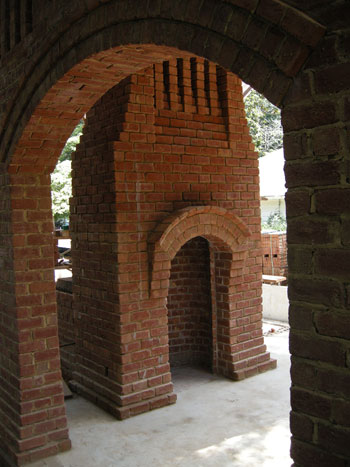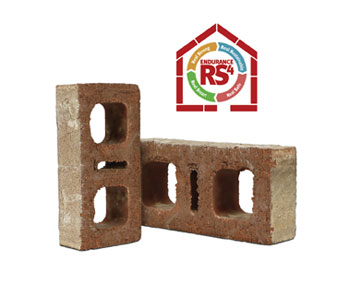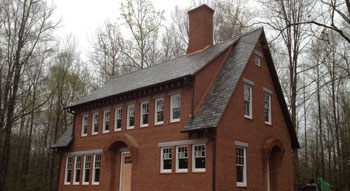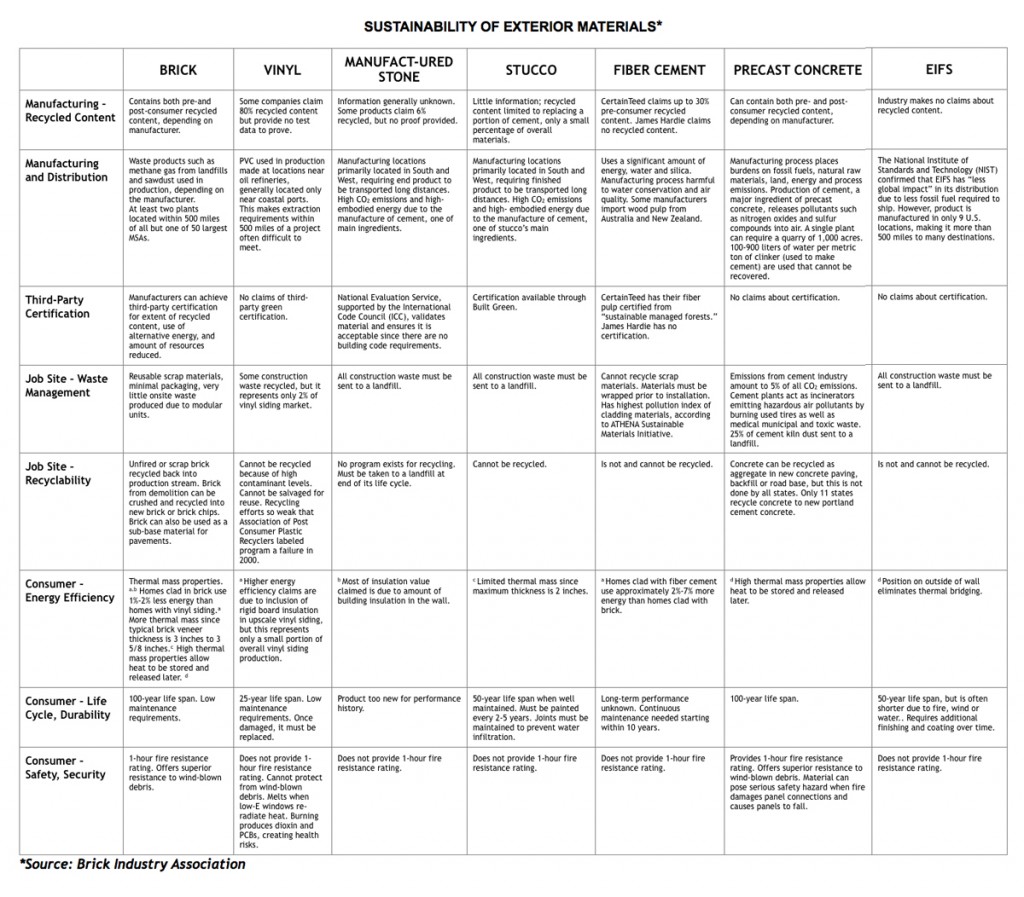Sustainable Home Building & ROI
With the median age of first-time homebuyers at 31 years, Gen X’ers are shifting trends. From Energy Star appliances and less formal spaces to large garages designed for more than two vehicles, young families looking for ways to stretch their income are paying more attention to the cost of a home throughout its lifetime. They want practical, functional spaces and materials that are environmentally friendly, as well as a home that provides a return-on-investment. Below are some products and factors that affect sustainability – and the bottom line – in home building and buying.
Important Housing Market Changes
Realtors, builders, suppliers, designers, homeowners, bankers and the general public breathed a sigh of relief in 2013 as the US housing market finally showed signs of turning around. Redfin, an online national real estate brokerage based in Seattle, Wash., reported that home prices, sales and inventory in 19 key US markets rose 4.9 percent in April 2013 and increased 16.1 percent for the year. The number of homes for sale increased 6.4 percent from March to April 2013, the strongest gain for that time period since 2009. That came on the heels of home prices experiencing a 9.3-percent increase in February 2013 over 2012 prices – the biggest gain in almost seven years. Market analysts attribute improvement to the growing number of buyers bidding on a limited supply of homes. According to the National Association of Realtors, buyer traffic rose 31 percent in 2013 over the prior year.
Of course, with housing, it’s always “location, location, location,” and prices are generally connected to the cost of living. New York City continues to be the most expensive place to live in the United States with cost of living at twice the national average. Cities like Norman, Okla.; Memphis, Tenn.; and Pueblo, Colo., are among the least expensive locations with cost of living at 80.9 percent, 85.1 percent and 85.6 percent of the national average, respectively [cnbc.com]. Housing industry experts advise cautious optimism as everyone waits for a complete, widespread market turnaround.
In the meantime, while a buyer’s market still exists, homeowners and homebuyers can find new and creative ways to get the most for their dollar. One way to ensure payback value is in materials used to adorn the exterior of a building. According to data from the Department of Housing and Urban Development (HUD), nearly one-fourth of new homebuyers list exterior as the reason they chose a particular home, and approximately the same number base their decision on quality. Seventy-three percent agree that projected utility costs influence their purchase decision, and 89 percent are willing to pay more for an energy-efficient home with lower utility bills than for a lower-priced home without energy-efficient features [HUD, 2011 American Housing Survey].
Nowhere is quality more important than on a home’s exterior. While a number of exterior material manufacturers may claim green or sustainable features for their products, a wise consumer digs deeper and compares details. For instance, a brick exterior can increase the value of a home up to six percent, which is one reason why brick is the choice of 60 percent of US homebuyers [National Association of Home Builders].
How Brick Stacks Up
When compared with vinyl, manufactured stone, synthetic stucco, fiber cement, precast concrete and EIFS (exterior insulation and finishing system), brick outperforms in the majority of eight key categories and functions at least equally as well in the remaining areas. The Brick Industry Association (BIA) has compared exterior materials in the manufacturing process, at the job site and for consumer use in the following categories: recycled content, manufacturing and distribution, third-party certification, waste management, energy efficiency, life cycle and durability, safety/security and recyclability. The comparison chart provides sustainability details regarding different exterior cladding products. [See chart below.]

General Shale Buckingham Tudor brick
For example, due to its thermal mass properties, homes clad in brick use one to two percent less energy than homes with vinyl siding. Brick has a 100-year life span with low maintenance requirements, and very little onsite waste is produced in the manufacture of brick units. At least two brick plants are located within 500 miles of all but one of the 50 largest metropolitan statistical areas (MSAs) in the United States, thus reducing energy required in transporting products. Brick is superior in fire and wind protection and in functioning as a moisture and noise barrier. In addition, a 2009 National Science Foundation study revealed that buildings constructed with brick veneer/concrete masonry can resist earthquakes above the Maximum Considered Earthquake for Seismic Design Category D without collapse [BIA data]. Investing in a home with a brick exterior can reap dividends throughout the life of a building. The savings emerge as early as the first year, assuming all items except exterior cladding are equal –including financing, expected appreciation, base price range and other factors.
In a cost comparison that takes into consideration resale value of a home, maintenance, insurance premiums, heating/cooling and cost of exterior material paid through the mortgage over one to eight years, savings of a brick exterior are estimated to be approximately $20,000 per year more than vinyl, EIFS and cedar. After eight years, the cost of cedar on the exterior of a home is more than double that of brick [Brick Distributors of Illinois calculation, adjusted for inflation, www.maconline.org/tech/rescost2004lr.pdf]. Although this is only an estimate, it provides a sound basis for estimating long-term expenditures. Variables like resale value, energy costs and maintenance expenditures will always be affected by geographic factors that include local and national economic climates, neighborhood location and labor rates.
Thermal Mass & Energy Savings
Brick is an important choice as an exterior and interior building material for a number of reasons, including an attribute called “thermal mass.” It is widely acknowledged that brick buildings require less energy for heating and cooling; however, the reason for the product’s efficiency may not be so apparent. The savings are largely due to thermal mass properties; and heavyweight building materials, such as brick, are able to store significant heat and are, therefore, said to have “high thermal mass.”
Scientists at the National Brick Research Center at Clemson University, Anderson, S.C., are investigating the thermal mass of brick as well as its fire and wind resistance and other properties. They have defined thermal mass as “the ability of materials to store significant amounts of thermal energy and delay heat transfer.” In other words, it is the object’s ability to absorb and store heat and release it at a later time.
When used in context with building, thermal mass is often characterized by the so-called “building envelope” – which may be masonry, concrete, insulating material and/or any other materials that act as the skeleton of a building. The type, thickness and location of the thermal mass and insulation layers are crucial parameters that affect the thermal behavior of a building envelope [Sanders and Shepherd, Brickyard, April 2013]. Generally, the more thermal mass, the better – in terms of comfort and energy savings. The effectiveness of thermal mass depends largely on its location; the best place is usually inside the insulated building envelope. Wall selection accounts for approximately 60 to 70 percent of thermal mass with floor area about 30 to 40 percent.
“For example, assuming it is hot outside and cool inside, for brick on the outside of a building there is a fixed amount of energy required to heat the brick during the day,” explains John P. Sanders, PhD, PE, director of the National Brick Research Center and research associate professor at Clemson. “The energy that goes into the brick to heat it up does not directly transfer into the interior. This heat can be released slowly over time, usually at night as the surface of the building cools. The net effect is that brick can help buffer (delay and reduce peak) heat flow through the building, which reduces peak demand on the HVAC system.
“Building codes,” continues Sanders, “recognize the benefits of thermal mass and allow lower R-values for what they term mass walls. R-value is used to characterize how well an insulating material works – the higher the value, the better the insulation. R-value is defined as the temperature difference between two surfaces that causes a unit heat flow.”
When thermal mass is used properly, heat flow can be delayed through the building envelope as much as 12 hours. This results in cooler, more comfortable interior temperatures in summer and warmer interior temperatures in winter with less energy required for heating and cooling. During warm temperatures, thermal mass absorbs heat. While an aluminum building or tent heats up quickly, heavier materials like brick or concrete have high thermal mass and require less cooling. For the same reason, a brick building holds heat better in colder weather. Thermal mass in floors and walls absorb radiant heat from the sun through windows; therefore, brick or thin brick can be used for interior walls to increase energy efficiency. Thermal mass is especially important in climates with large fluctuations in day and night temperatures.
To put it simply, a material with good thermal conductivity allows heat to flow through it. Brick is a good conductor of heat. The denser the material, the higher its thermal mass will be. Brick, in combination with the right type of insulation, is highly effective as an energy-efficient exterior.
Real Sustainable & Real Smart
The popularity of brick is related to a number of factors, such as durability, color, texture, size variation, compressive strength and absorption. However, professionals and consumers alike point to its versatility – the product’s value in design and function not only throughout the home but also in the building’s surroundings. Brick and thin brick continually redefine interior architecture options, as well as patios, exterior kitchens and outdoor living areas.
As the average size of new homes in America decreases, more people are entertaining at home, and outdoor living spaces are gaining in popularity [Professional Builder magazine survey, 2011]. Industry analysts suggest that consumers are now more likely to invest in creating a customized “vacation experience” in their back yard, thus adding permanent value to their home, instead of spending money on expensive trips. In fact, outdoor living space was one of the top three most-requested items by homebuyers in 2011, and marketing data reflect that trend. According to research by Professional Builder magazine and the American Institute of Architects, requests for outdoor living space increased by 46 and 56 percent, respectively, from 2010 to 2011.
An outdoor living area is estimated to provide more than a 130-percent return-on-investment, and most homes in the United States are expected to have some type of outdoor feature by 2015 [National Association of Home Builders]. An outdoor space increases livable area at a lower cost per square foot without creating zoning issues, and an outdoor space is less expensive to build than enclosed space. In a 2011 survey by the American Society of Landscape Architects, more than 94 percent of landscape architecture professionals rated fire pits/fireplaces, installed seating and grills among the five most popular items for outdoor living spaces.
Homeowners, homebuyers and construction professionals constantly watch for new products on the market that add value in terms of long-term use and return-on-investment. This includes simple solutions for meeting the latest (2012) Energy Code requirements with minimal labor and cost adjustments. General Shale’s Endurance RS4Structural Brick, when combined with continuous insulation, is a simple but innovative solution that meets objectives for exterior beauty, endurance and energy savings. RS4 stands for “Real Strong, Real Safe, Real Sustainable, Real Smart.” More specifically, this product is safer, stronger, more energy efficient and sustainable – and is designed for structural longevity. It eliminates the need for load-bearing wood or steel framing and has excellent thermal mass properties.

General Shale Endurance RS4 brick
In addition, Endurance RS4brick is suitable for any type of foundation, withstands higher loads, meets seismic requirements and is recommended for homes, especially in areas prone to high winds, tornadoes and earthquakes, as well as for commercial or government buildings like hospitals, schools, courthouses and police stations. Endurance RS4brick is larger than normal brick, which means it can be installed with minimal labor and overall cost adjustments. With new, solid-sheet insulation and the manufacturer’s method for reinforcing the brick, it virtually eliminates the need for wood or steel sub-framing.
New uses for familiar products – and new outdoor living products – continue to appeal to homebuyers across the nation. Consumers are increasingly adding items, such as brick fireplaces, fire pits and pizza ovens, to improve functionality and appearance. In addition, landscaping stones, concrete pavers, clay pavers and retaining walls complement customized outdoor living areas. And, many items are available in do-it-yourself kits easily assembled by homeowners and non-professionals.
Hope for Architecture
Brick, the world’s oldest green building material, has an unmatched legacy. It has been around for 5,000 years or more, and many brick structures are still standing after centuries of “wear and tear.” And, it continues to define architecture in creative new ways. Hope for Architecture (HFA), a building initiative founded by designer and artisan-builder Clay Chapman, broke ground in 2012 in Georgia with a field test for a “new” building model that demonstrates a surprising and unfamiliar theme, “Affordable Architectural Permanence.”
The goal has been to gather hard data concerning the economic variability of the concept and to clearly establish that a permanent, multi-century legacy home can be built for the same price as a conventional, production-based disposable house. The building model has a structural masonry theme, which is to say that the exterior envelope walls of the design are free-standing, load-bearing, clay brick masonry. These solid masonry walls are constructed from regional brick, three units deep, composing a nominal 12-inch-thick wall.
“Of course, this is not actually a new way of building,” says Chapman, owner of Period Architecture in Decatur, Ga. “Much of ‘still-standing’ Rome was built with structural brick masonry more than 2,000 years ago. And, there are many examples of more than 500-year-old buildings constructed in this manner, which now define the character and identity of Europe as we know it. The HFA model not only borrows from such valuable milestones of the past but also provides a platform for integrating important new systems and technologies.”

General Shale Campus Blend brick
In addition, restorations of pre-World War II structural masonry textile mills and warehouses provide valuable insight. These antiquated and otherwise obsolete buildings are being remodeled into city loft apartments, clothing boutiques and posh restaurants. The success of this motif reveals a true penchant for exposed interior brick within a trailblazing demographic of the market. For Chapman, this observation initiated a number of speculative questions: (1) Has the consumer grown weary of the faux-based building culture that dominates the mainstream? (2) Is the consumer, in fact, tired of consuming? (3) Is the humble authenticity and honest, unapologetic nature of a roughly constructed brick wall actually preferable to the polished cosmetics and refinements of convention simply because it is not pretending to be something it is not? Apparently so since 1,000 followers from more than 20 countries have been following the field test progress. Before the dwelling even reached completion, Chapman was being invited to lecture about the process in both academic and industry settings.
Since the project began in Columbus, Ga., about a year ago, Chapman and a film crew have been documenting the entire process to bring public awareness to this exciting building alternative. The documentary film will focus on the many advantages accompanying the HFA model, ranging from conservation and the environment to posterity and legacy within the built environment. To learn more about the Hope for Architecture initiative, visit www.hopeforarchitecture.com, or go to the Hope for Architecture Facebook page.





























